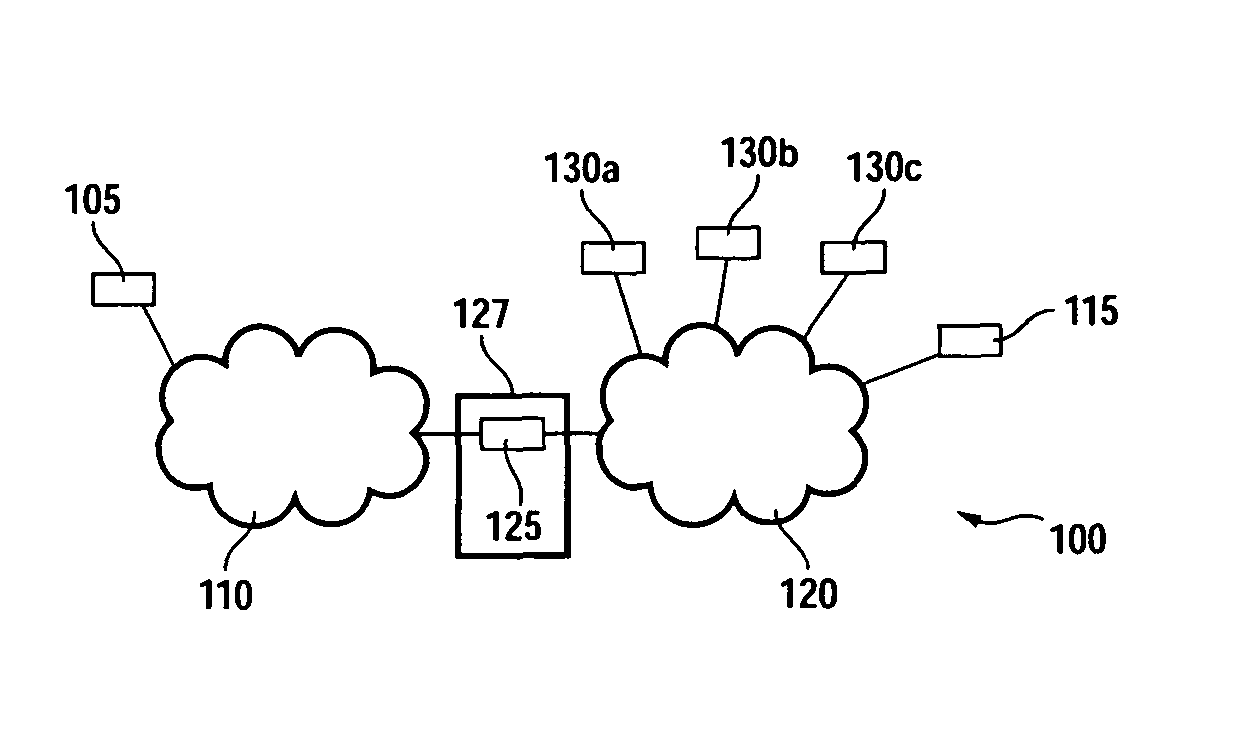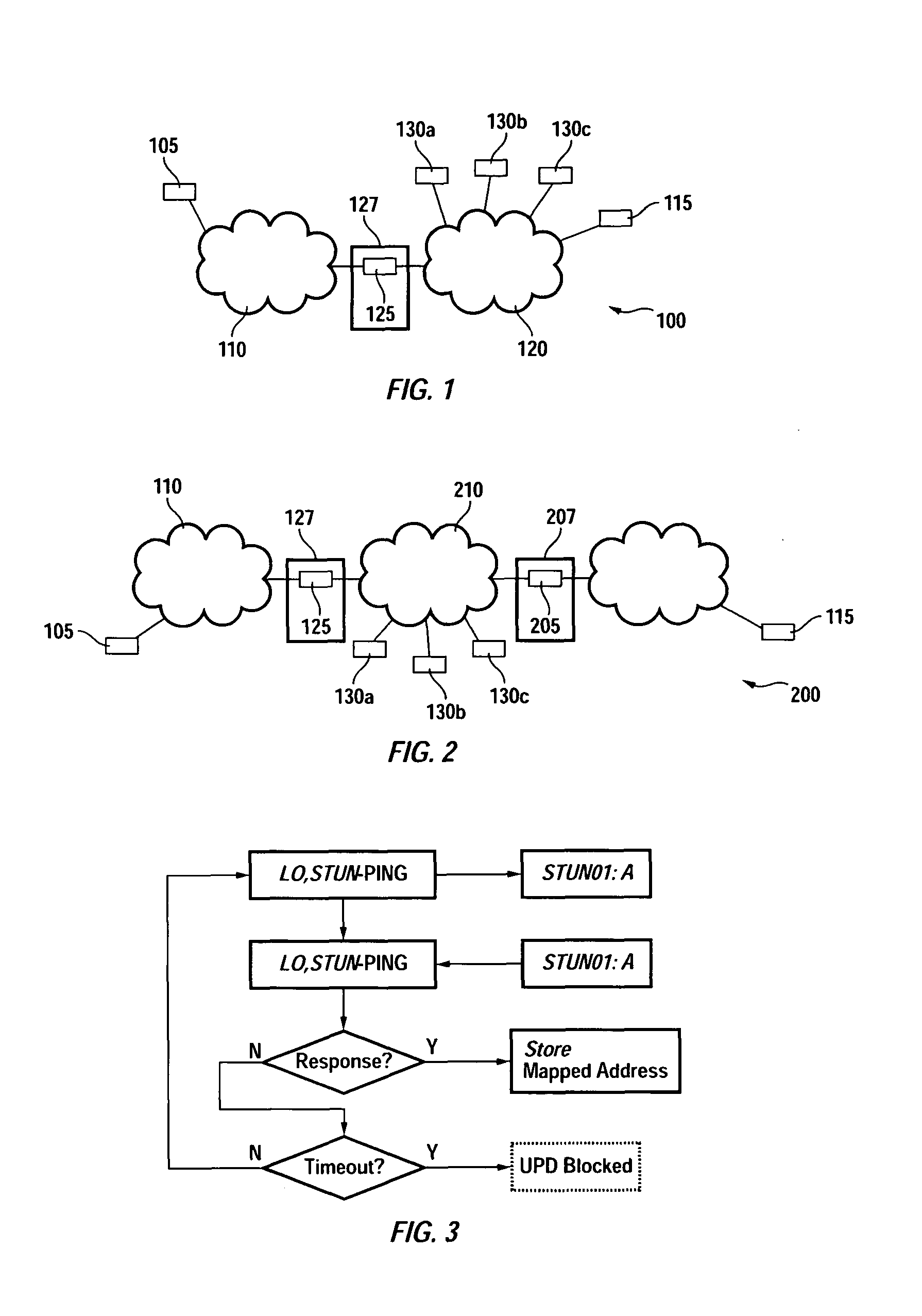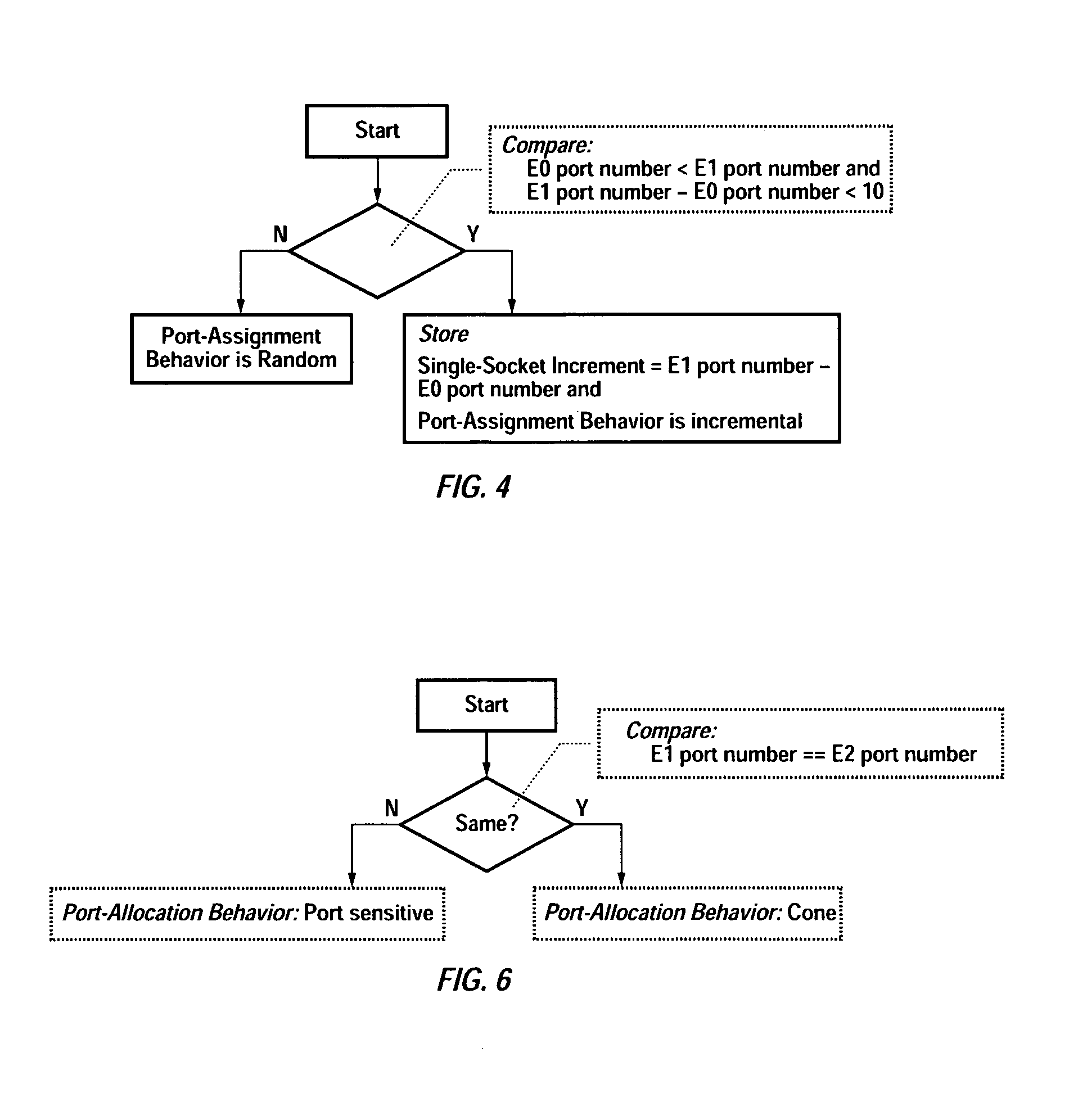Method and apparatus for packet traversal of a network address translation device
a network address and translation device technology, applied in the field of computer network communication, can solve the problems of slow down of available internet protocol (ip) addresses for new assignments, affecting the ability of internal computers to receive communications (e.g. packets) from external computers, and affecting the ability of internal computers to receive communications
- Summary
- Abstract
- Description
- Claims
- Application Information
AI Technical Summary
Benefits of technology
Problems solved by technology
Method used
Image
Examples
first embodiment
[0076]According to the port-prediction information, if the internal computer determines that the NAT device does not support UDP packets or other packets used to characterize the NAT device, the internal computer is configured to conclude that a UDP peer-to-peer connection with the external computer is not possible and may be configured to establish another method of communication with the external computer.
second embodiment
[0077]According to the port-prediction information, if the internal computer determined that it is not behind a NAT device and the NAT device is an exceptional NAT device, the internal computer is configured to generate a new socket, say L2, and bind the socket to a random port (e.g., a port between 5000 and 65535). The internal computer then stores the local port number that was bound to socket L2, for example, as L2 port number. Further, the internal computer is configured to set the UDP predicted external port number to the L2 port number as no NAT device is disposed so as to map the L2 port number to a mapped port number. The internal computer is further configured to set the UDP-predicted-internal-port number to the L2 port number.
third embodiment
[0078]According to the port-prediction information, if the internal computer determined that it is not behind a NAT device, and the NAT device is not an exceptional NAT device, then the internal computer is configured to set the UDP-predicted-external-port number to the L1 port number, and is configured to set the UDP-predicted-internal-port number to the L1 port number.
PUM
 Login to View More
Login to View More Abstract
Description
Claims
Application Information
 Login to View More
Login to View More - R&D
- Intellectual Property
- Life Sciences
- Materials
- Tech Scout
- Unparalleled Data Quality
- Higher Quality Content
- 60% Fewer Hallucinations
Browse by: Latest US Patents, China's latest patents, Technical Efficacy Thesaurus, Application Domain, Technology Topic, Popular Technical Reports.
© 2025 PatSnap. All rights reserved.Legal|Privacy policy|Modern Slavery Act Transparency Statement|Sitemap|About US| Contact US: help@patsnap.com



